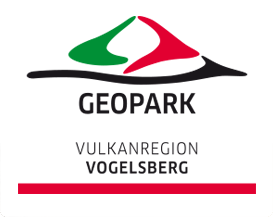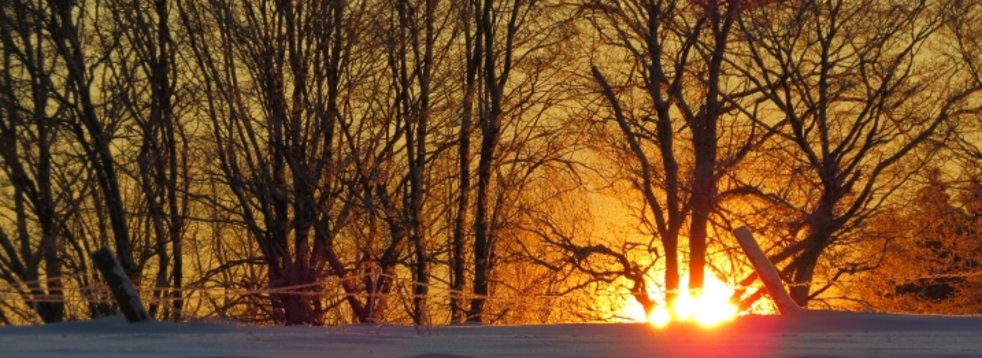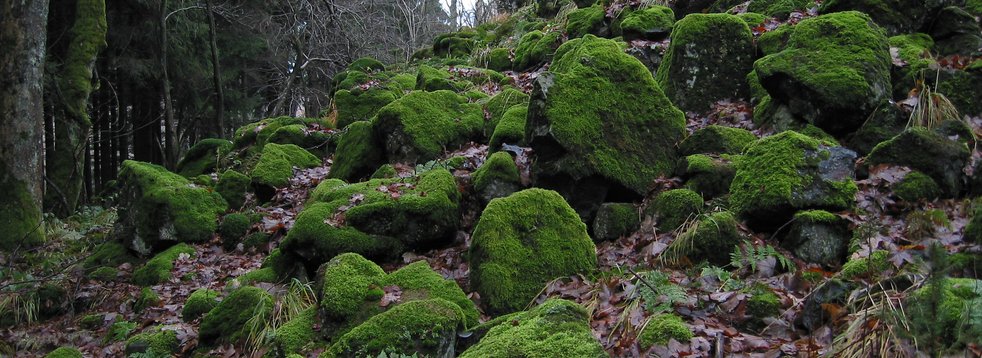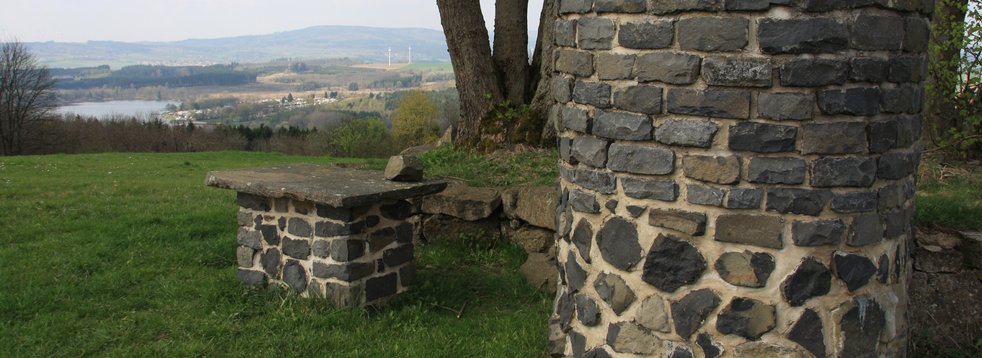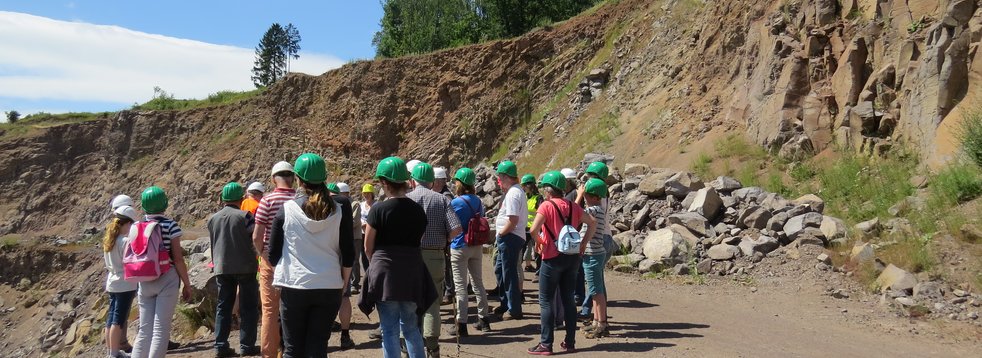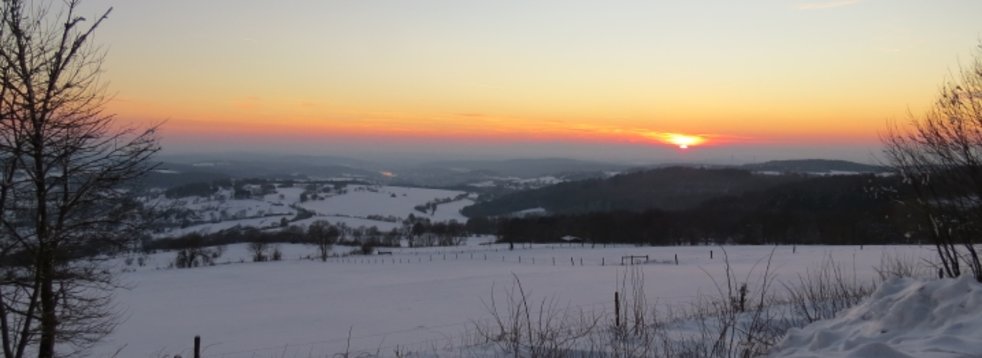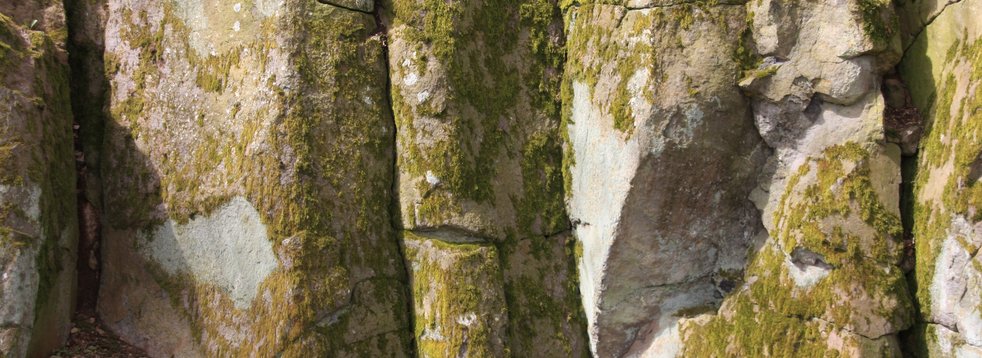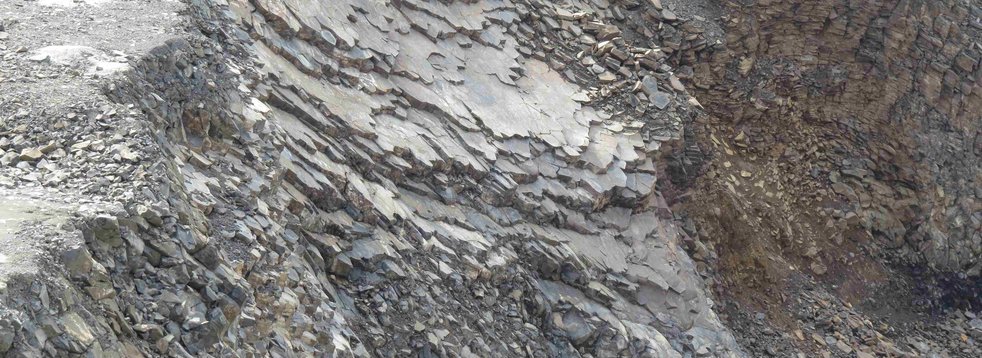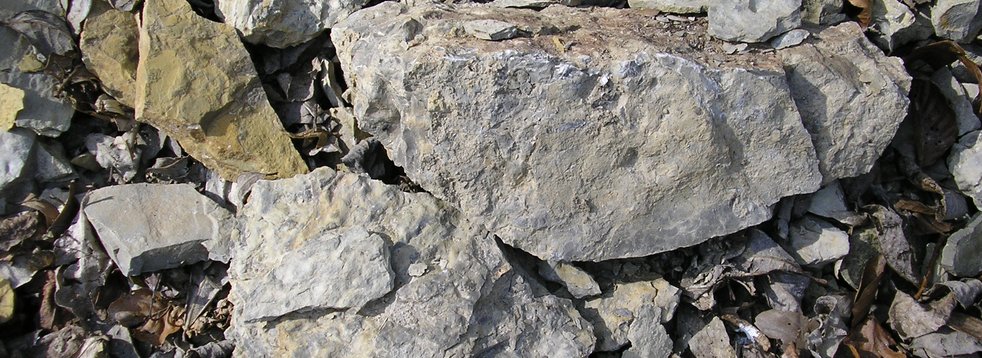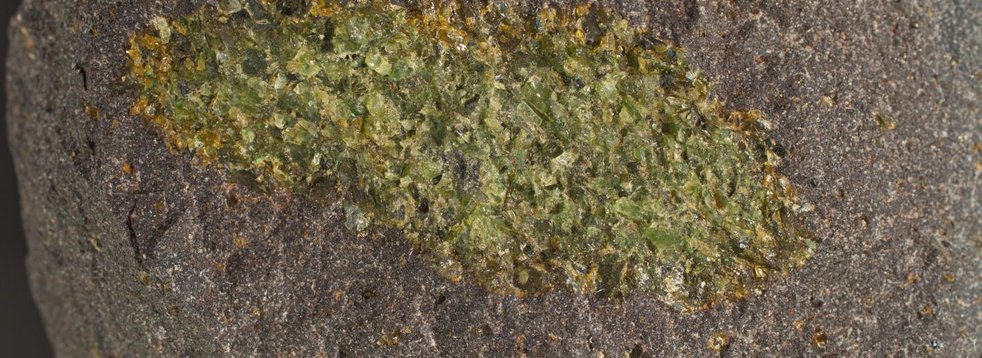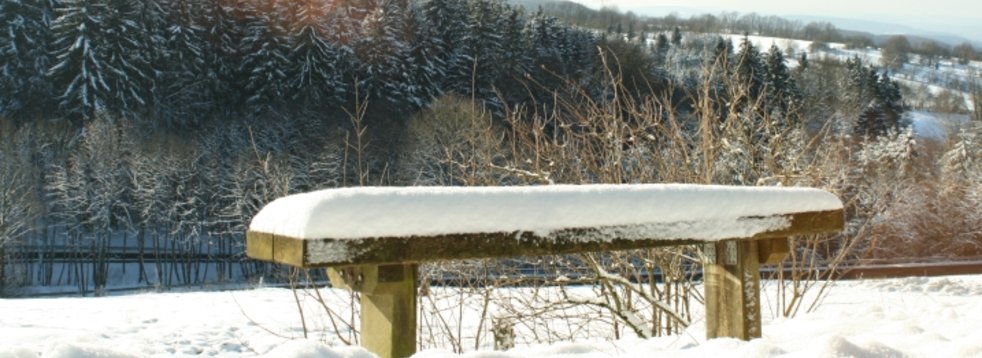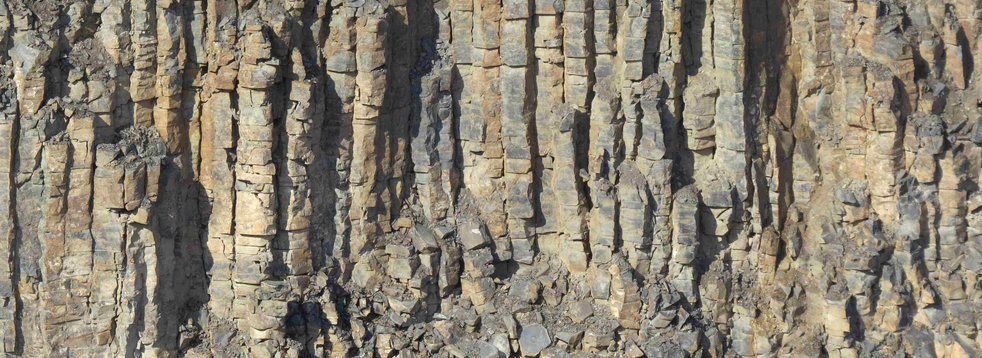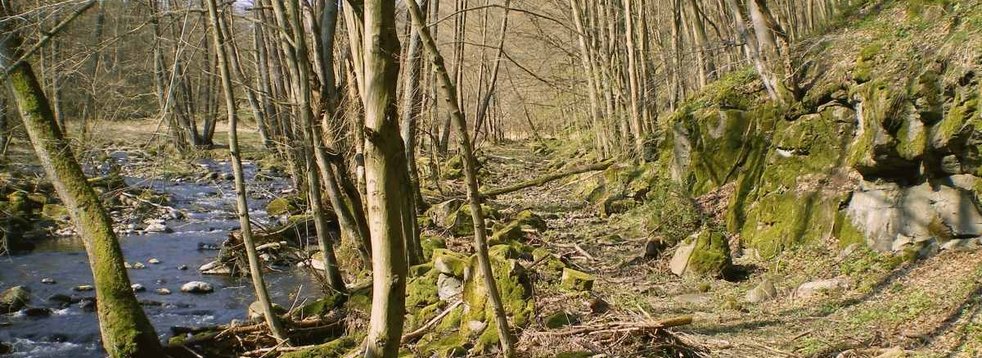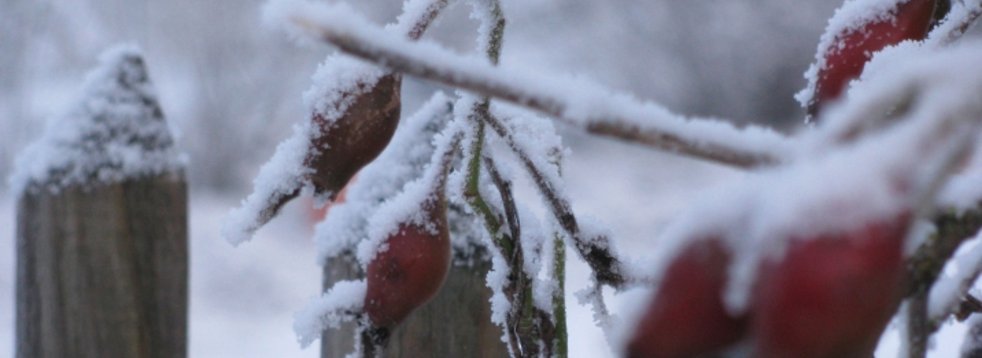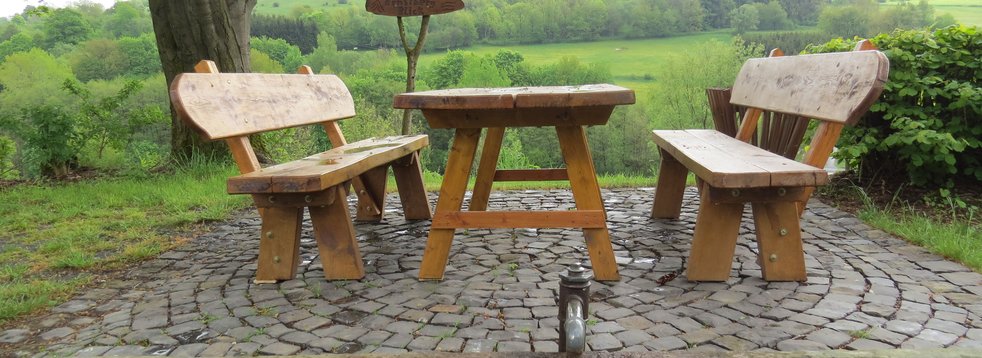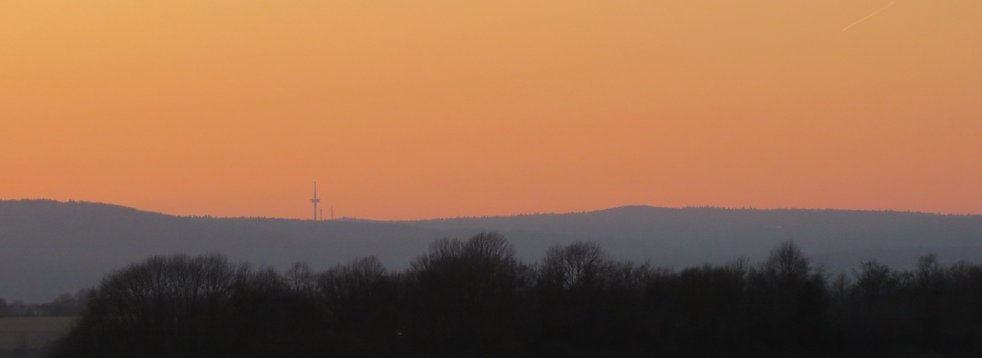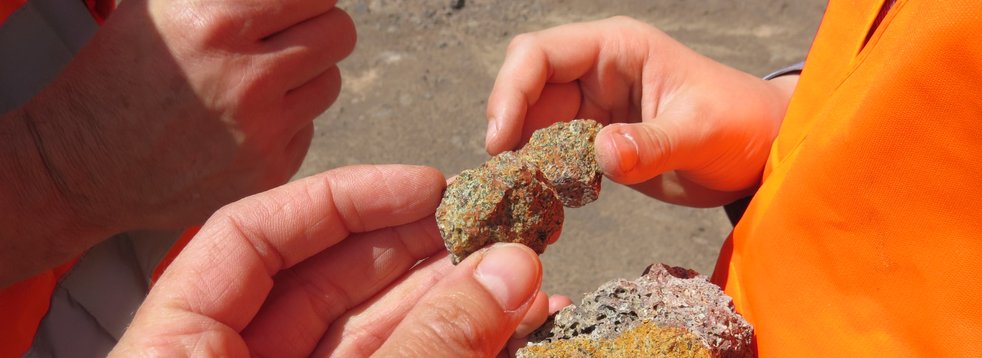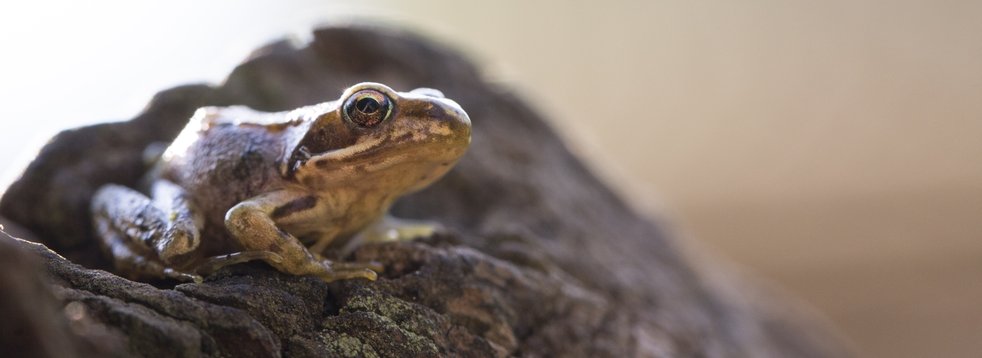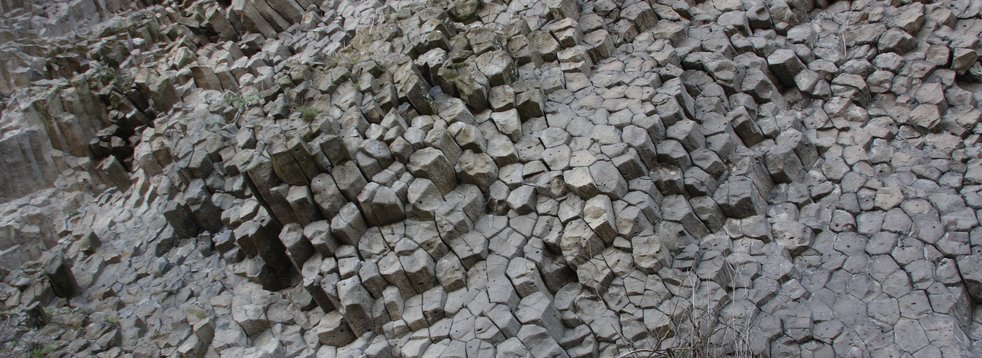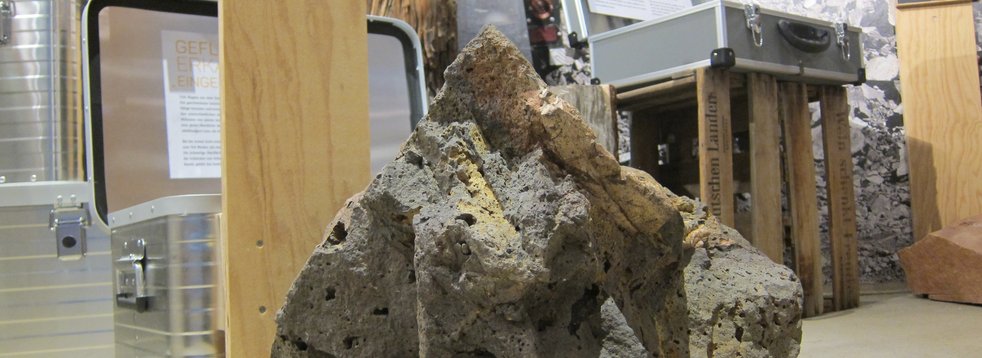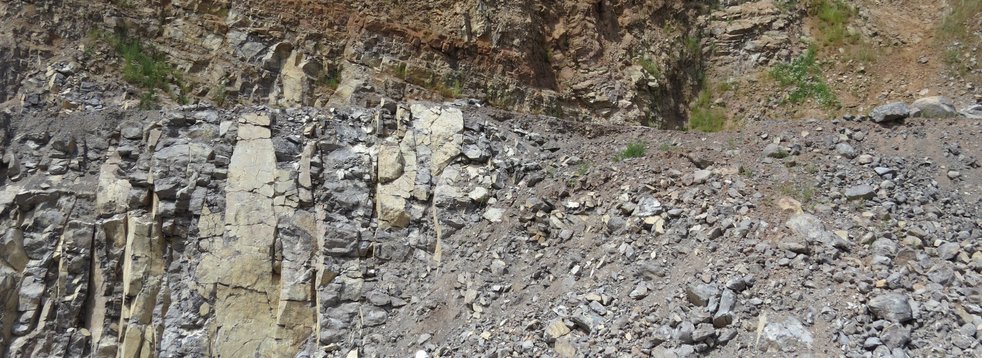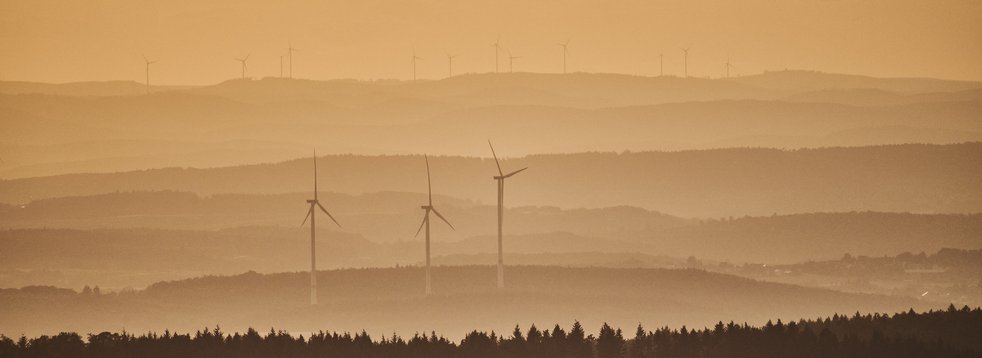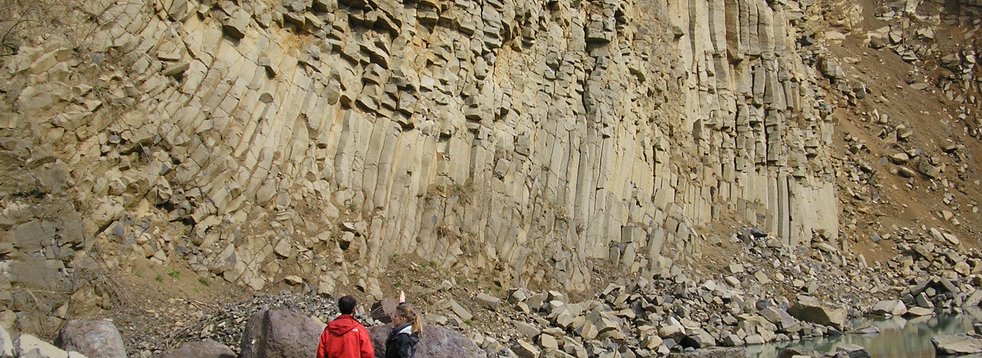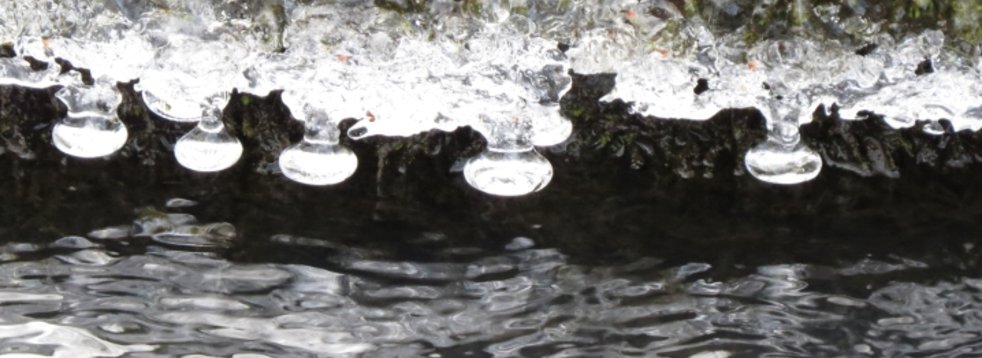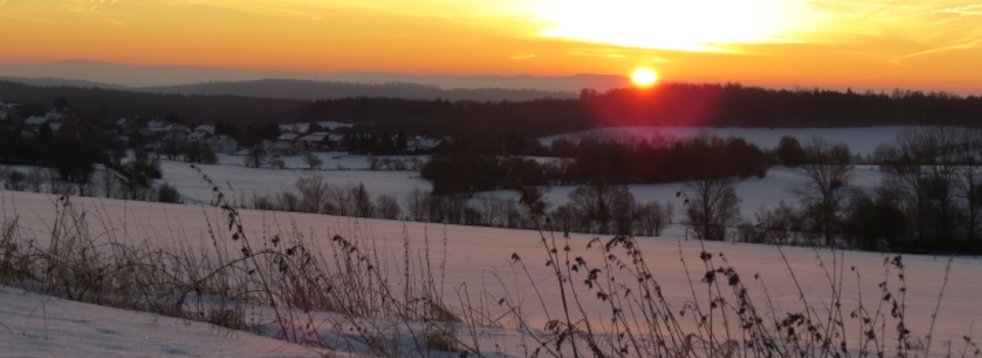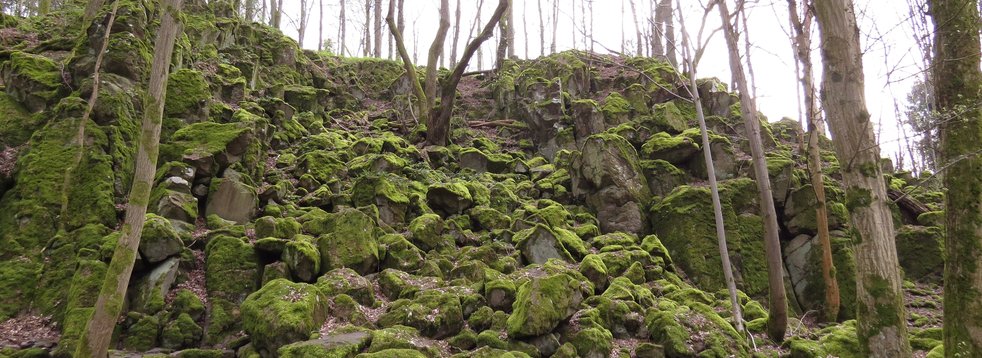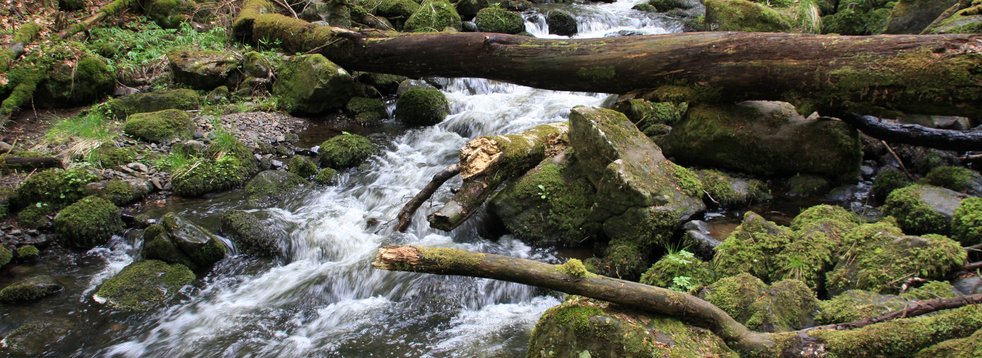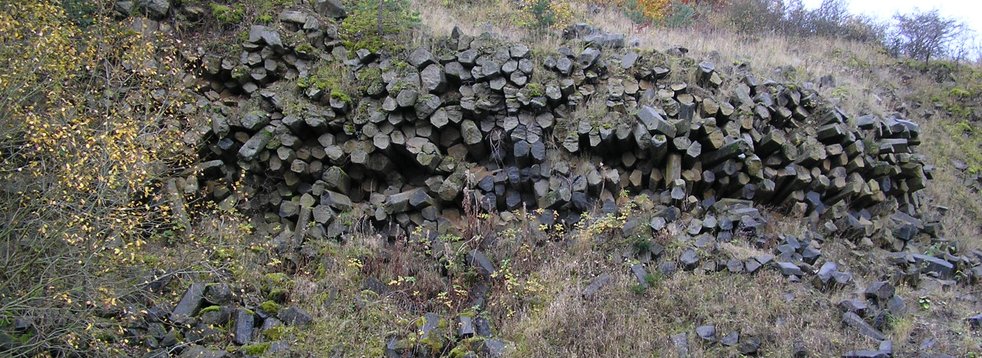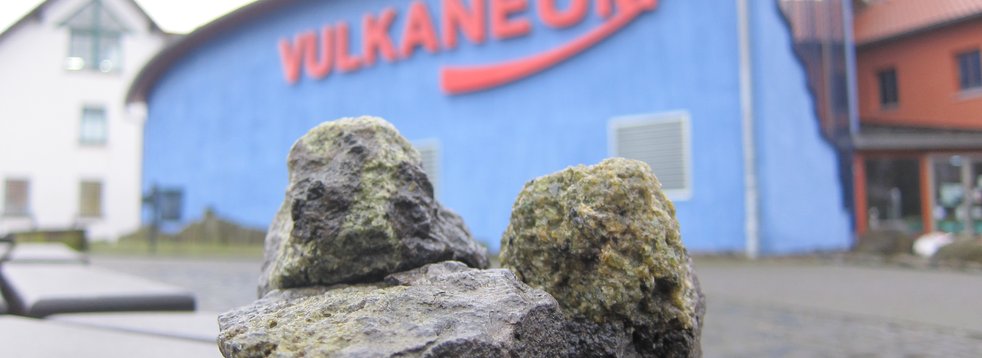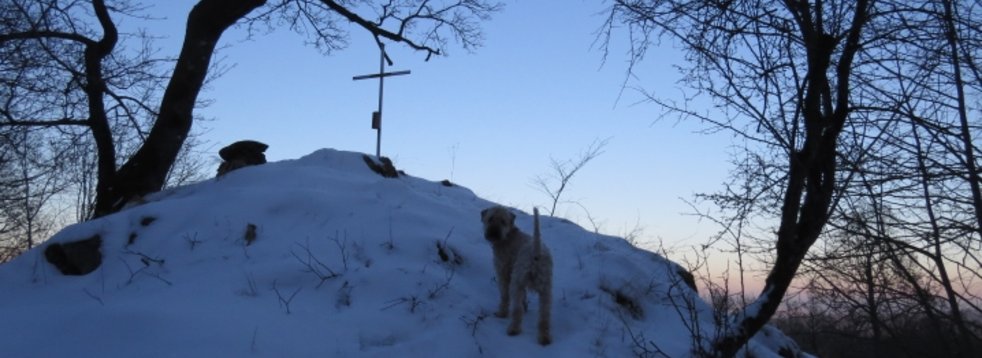The name "Horst" probably derives from the old and middle High German word "hurst", which means "shrubbery". The "Horst" in front of Freiensteinau-Gunzenau is, however, less shrubbery than a former quarry, which was not filled with rubble after its raw material use and thus today provides an insight into the geology under our feet. If you would like to take a short walk to the natural monument, you can walk up from the Nieder-Mooser Lake or park directly above the Gunzenau cemetery.
Between the Gunzenau cemetery and the highest point at 455m above sea level, you can enjoy a wonderful view from the Bonifatiuskanzel over the landscape with the Vogelsberg lakes to the west and the Rhoen to the east. A gravel path leads downhill in western direction to the former quarry. On the left hand side you take a turn into a small field wood. Behind the barrier the view opens up into the circular quarry. The high rock walls with their flat appearance and the different fissures are made of basanite.
Basanites are the most primitive volcanic rocks, but they are also among the most recent volcanic products of the Vogelsberg. Primitive in the language of the geologists means that the melts still had their original composition and were not changed on the way to the surface. In the black and fine-grained rock one finds peridotite intercalations with its main component olivine. This rock was torn upwards from a depth of around 60 kilometres during strong eruptions more than 15 million years ago - and at great speed: the magma was at the surface in a maximum of a few days. In the otherwise dark rock, the sometimes fist-sized olivine nodules with their different shades of green are very easy to spot. The weathered basalt soil allows an amazing variety of plants to thrive, even orchids can be found. And the bird world has also discovered this structurally rich habitat for itself. Enough reasons to protect the quarry as a natural monument and geotope worth seeing.
Further insights into the geology of the Vogelsberg can be gained on our homepage (www.geopark-vogelsberg.de). All previous portraits of the new natural monument geotopes have been collected for reading on the Vogelsberg District homepage www.vogelsbergkreis.de.
Sources:
- Text, Signpost/Collage Natural Monument, Location of Natural Monuments, Tabular List of Natural Monuments, Natural Monument Regulation and General Map: Lower Nature Conservation Authority, Vogelsberg District
- Photo: Susanne Jost (Lower Nature Conservation Authority)
______________________________________

